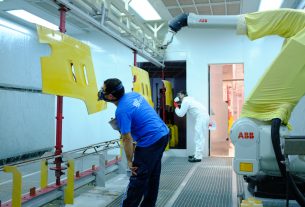According to ABI Research, pharmaceutical manufacturers will spend USD 1.2 billion on data analytics by 2030. The industry is accustomed to one way of operating — large batch size production. As pharmaceutical production moves to a more personalized approach, manufacturers may struggle to keep pace and remain agile. How can the industry catch up? Here Johan Jonzon, CMO and Co-Founder of pioneer in edge analytics and intelligent workflows Crosser, shares insight into how edge analytics can optimize processes in pharmaceutical manufacturing.
Unlike pharmaceutical manufacturing facilities of the past, which often focused on producing just a handful of medicines — typically of the same form, such as tablets, liquid medicines, or vaccines — today’s manufacturing lines are expected to adapt for multiple different products. This expands to accommodating the manufacture of personalized medicines and small batches, which can be challenging for pharma manufacturers who are accustomed to large scale manufacturing for a limited number of products.
Making pharma flexible
Personalized medicine moves away from a ‘one size fits all’ approach to creating products that are tailored to a patient’s personal condition. Using genetic or other biomarker information to tailor medical treatments to the individual characteristics of each patient, offers the potential to treat previously incurable diseases, and the method is becoming increasingly favored across the industry.
However, the manufacturing of personalized medications isn’t without its challenges. Working with smaller companies to develop smaller batches of product brings added pressure for pharmaceutical manufacturers, such as reduced time-to-market if the medicine is in sudden high demand. The development of COVID-19 vaccines is a pertinent example of this need for agility, as production adapts to a fast, urgent influx of new medicines. To keep up with demand, pharmaceutical facilities need to adapt to a new way of operating.
This might sound like it requires more equipment to handle increasingly complex methods of production, but instead manufacturers must consider investing in a good data management strategy.
Pharma at the edge
No matter what kind of product it’s producing, a pharmaceutical manufacturing plant produces a lot of data. To put the volume of this data into perspective, the average clinical researcher at a pharmaceutical company can generate tens of terabytes (TB) of data per day through scientific experiments. This translates to the equivalent of 1 million phone books worth of data. And that’s just a clinical researcher — it does not account for the data produced elsewhere, such as in the production, dispensing or packaging of medication.
The rapid deployment of the Internet of Things (IoT) across the manufacturing spectrum means that sensors are being placed at virtually every touch point of a production line. These sensors record an abundance of data; but, making this data available and meaningful to operators in real-time is key to achieving agile production. This is only possible if the data is processed close to its source — on the shop floor at machine level.
There are additional struggles manufacturers must battle too. Security and data privacy are major concerns for the industry, especially when dealing with data such as personalized medication. Processing data locally, however, is often more secure than transferring it to the Cloud.
In 2020, pharma giant Pfizer suffered a data breach when patient information was exposed on unsecured Cloud storage. In fact, between 2018 and 2020, over 30 million patient records were exposed because of Cloud misconfigurations, costing organizations an estimated $5 trillion.
While cyber hacking is a severe issue — one that’s proving difficult to overcome — edge analytics can make data interference more challenging for hackers. Processing at the edge limits the frequency at which data is transferred between its source and the data center, which reduces the risk of data breaches.
What’s more, processing data at the edge significantly reduces operational costs. Instead, by processing close to the source, manufacturers can condense the quantity of data that would originally be sent to the Cloud by more than 98 per cent. This reduces bandwidth and Cloud service costs, while promoting faster and more efficient data collection.
Faster, simpler, smarter
In addition to processing data at the edge, making it available in almost real-time, pharmaceutical manufacturers must also make their data infrastructure simpler. From laboratory information systems (LIMS) to enterprise resource planning (ERP), to inventory management systems, pharmaceutical companies use many types of software and on top of that, it’s not uncommon to have different vendors and generations of software in different divisions, sites or even countries.
Each system is capable of taking care of its own tasks, but a further challenge arises when there are processes that span across different systems. This is often the source of many manual steps that result in significant time-delays and high costs, and there’s a huge opportunity to gain competitive advantage if all these processes are transformed into fully digital workflows.
Previously, workflows were designed to extract, transform and load data in batch and move it between different systems. Workflows and automations had to be implemented in the system endpoints, which slowed the pace of development and any changes required the assistance of specialised developers for each system. Organizing data from multiple sources was often costly, painful and time consuming.
That’s why Crosser developed Intelligent Process Automation (IPA). The first hyperautomation solution that brings intelligent workflows to industrial and asset rich organizations, like pharmaceutical manufacturing plants, IPA is a hybrid solution that can run at the edge, on-premise in a private Cloud, or in one run by Crosser. Supporting over 700 systems, users can connect any type of data management tool to an easy-to-use, drag-and-drop workflow to build workflows faster than ever before. All data types, whether they’re from legacy systems, Cloud applications or machine data, can be collected and used to implement process automation across an entire plant.
The pharmaceutical industry is transforming rapidly. We only have to look at the COVID-19 vaccine rollout to understand the need to have multiple, flexible ways of operating. However, if industry is to replicate this need for speed in the future, and move towards more agile methods of production, it needs to handle all areas of productivity more flexibly. Handling data at the edge is an important starting point, but manufacturers must also consider how they build workflows that give complete visibility to all areas of production, from laboratory development all the way to the top floor.




